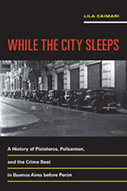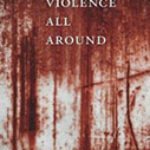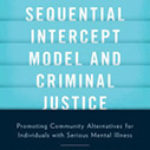While the City Sleeps: A History of Pistoleros, Policemen, and the Crime Beat in Buenos Aires before Perón

Author: Lila Caimari
Publisher: Oakland, California: University of California Press, 2017. 248p.
Reviewer: Michelle D. Bonner | May 2017
What is the role of police in society? What defines a “good” police officer? Where do police derive their legitimacy that justifies their use of discretionary and sometimes political violence? Often these questions are answered by assessing police institutional structures. Instead, in While the City Sleeps Lila Caimari explores these issues using a close analysis of media accounts (mass media, police media, and popular media) at a key moment of change in the role of the police in Buenos Aires in the 1920s and 1930s. In this eloquently written book, she takes as the focus of her historical examination the relationship between the police and the city (p.12). What Caimari finds will resonate as important for scholars of policing in many countries, as well as make a significant contribution to our historical and contemporary understanding of policing in Argentina and Latin America generally. For scholars of contemporary policing, a number of key themes in Caimari’s study stand out as particularly striking.
First, in the initial few chapters of the book, the reader encounters thought-provoking similarities with current debates in criminology regarding the causes of punitive populism. In these chapters, she lays out some of the important changes that were occurring in Buenos Aires (and elsewhere) in the 1920s and 1930s that led to a growing sense of insecurity amongst citizens, and to their questioning of the role of the police. Echoing, but not drawing on, David Garland’s (2001) influential analysis of punitive populism, Caimari finds this break with the past to be attributable to an array of factors related to “modernity” (new technologies, the arrival of commercial tabloid journalism and Hollywood films, and mass immigration and urbanization) and their effects on morals, “the unbridled expansion of consumer culture,” loss of identity, and “dangerous fantasies and seductive stimuli” (p.14). Whereas Garland defines contemporary “late modernity” in a similar manner, Caimari is analyzing early “modernity”.
In both cases, their use of the more vague and deterministic term “modernity” diminishes the relative importance of political economy (liberalism for Caimari and neoliberalism for Garland), which they both implicitly recognize to be at the root of many of the issues they discuss. Indeed, both recognize the role of the political economy in the causes of public anxiety during these periods of change, but leave them as passing comments. For example, Caimari mentions the precariousness of the new social mobility in Buenos Aires in the 1920s and 1930s; the role of U.S. companies in promoting the proliferation of cars, guns (hand guns and automatic weapons), tear gas, tabloid journalism, Hollywood films; and, strikes by the working class – but without linking these issues together with the economic model that facilitated the changes and shaped them in the manner that they occurred. Indeed, as Caimari notes, the 1920s and 1930s were the last years of nineteenth century export-led liberalism in Argentina.
Instead, the author centers her examination on how the arrival of cars, cheap and more effective handguns, automatic weapons, and public electric streetlights changed the city. Cars and guns in particular introduced speed, and altered traditional codes of violence around knives and dueling. These technologies introduced new forms of violence that contributed to public anxieties, most notably around the chaos of new traffic patterns. Caimari reveals the explosion of deaths caused by cars and, to a lesser extent, firearms during this period. In contrast, the beat cop quickly came to appear to be slow and ineffective. Rapid immigration also transformed quiet communities rapidly into noisy urban neighborhoods, contributing further to citizens’ sense of increased speed and anonymity. Caimari notes that while other studies have explored how citizens in Buenos Aires responded to these changes by organizing together in civil associations to build libraries and community clubs, she finds that they were also very actively organizing and fundraising to put more police on the street and provide police with more technology, notably patrol cars, guns, and tear gas (p.88). That is, similar to today, while the causes of anxiety were and are diffuse, citizens saw, and see, increased policing as the answer.
Secondly, Caimari’s shows very effectively how the perception of the police, more than their practices, was key in transforming and consolidating their new image and legitimacy. The media, while occasionally antagonistic toward the police, was key in this transformation. The author recounts how nineteenth century mass media generally used “natural-scientificist” language, that drew on medicine, criminal anthropology, and psychiatry, and thus the suspect’s biological past, to explain in a detective story manner what caused the perpetrator’s criminality (p.1 & 43-44). With the introduction of commercial tabloid journalism in the early twentieth century, combined with technological changes that facilitated better photography, journalists’ coverage of crime both increased and became more focused on entertainment and the action of the moment. That is, how was the crime committed? Cars and guns featured prominently. In the early 1920s the police were portrayed as incompetent and as a minor part of the story. Eventually, after a number of high profile cases of extortive kidnappings, journalists shifted their focus to these crimes and the victims’ families. This provided a long and drawn out drama that could unfold daily with the surprise ending of the person either being released or found dead. The latter outcome contributed to public and media calls for tougher laws and more police on the street.
In this context, Caimari shows how police effectively established their legitimacy by using the media logic and engaging with popular culture. The mass media were enamored with new technology and the “new” crimes associated with them. When police were able to acquire patrol cars, radio communication, and guns, the media used these very visible symbols of modernity to emphasize the new effectiveness of the police who could respond with “speed”. Police were also very quick to use radio entertainment programs to present semi-fictional and fictional accounts of their work, along with novels and magazines. Using the emotion of melodrama, these narratives constructed an image of the ideal heroic police officer who cares for the working class and makes endless sacrifices to defend citizens even “while the city sleeps”.
Caimari very carefully weaves these stories around the more familiar history of police repression in Argentina during this period. She reviews how police were used to violently end strikes, spy on political dissidents (including union organizers, Communists, Anarchists, and Fascists), and began to use more sophisticated forms of torture, including the electric prod. Indeed, her period of study begins immediately after the 1919 Tragic Week in which the police massacred striking workers. It includes Argentina’s first military coup in 1930 (which resulted in a military government that ended in 1932), and another military government shortly afterwards (1943-46). Moreover, police corruption was widely known.
Yet, the author shows how despite these realities, the narrative of the idealized mythic police officer was constructed, particularly through fiction and semi-fiction and eventually through symbolic ceremonies and discourse. This utopian officer is “good,” as opposed to other officers who are “bad”. He works on the street corner, knows and is friendly with the neighbors, is a defender of the working class against “foreign” political agitators (Anarchists, Communists etc.), and his role in maintaining social order is celebrated. He also uses his benign discretion to distinguish between “bad” criminals and those who commit crimes out of necessity, showing his humanity and commitment to “a just sentimental order” (p.186) over the “impersonal enforcement of the law” (p.190). This mythical “good” officer is the one citizens were calling to have more of in the streets.
While the police in Argentina have never completely shed their disfavor in public opinion, Caimari rightly notes that these early narratives continue to hold weight today, as similar tensions persist between public recognition of police corruption and violence on the one hand, and demands for more police with more powers on the other.
This otherwise engaging book would have benefitted from a concluding chapter that tied together its themes and pointed to areas in need of more research. That said, the careful reader will note throughout the book many suggestions for further research. For example, in the last chapter Caimari provides a brief examination of some of the ways in which Juan Domingo and Eva Perón drew on and further consolidated the narrative of police-worker solidarity and established symbolic links between the police and “the people”. She rightly notes that there is very little historical work done on the relationship between Peronism and the police; yet the police were important supporters of his government. For the non-historian or non-Argentina specialist, this research call could be extended to more analyses of the stories told about policing that support populism generally, be it punitive or otherwise. And, by extension, the emotional narratives that could potentially present an alternative legitimizing story.
Another area for further research she points to, relates to technology and immigration. Certainly, Caimari convincingly shows technology and immigration to be important disruptors in the perception of policing in the Buenos Aires of the 1920s and 1930s — as they are in many countries today. Yet Caimari’s study highlights that it is the stories we tell, that the mass media (both fictional and non-fictional) tell in particular, that redefine policing. We need to listen carefully to these stories, their connections to the past, and their impact going forward. We need to ask whose stories are being heard most often and why.
In sum, While the City Sleeps is a must read book for anyone interested in policing. It will be of particular interest to historians, criminologists, sociologists, anthropologists and political scientists interested in the role of ideas and narratives in our conception of order, security and policing.
Reference:
Garland, David. (2001) The Culture of Control: Crime and Social Order in Contemporary Society. Chicago: University of Chicago Press.
Michelle D. Bonner, Associate Professor, Department of Political Science, University of Victoria


